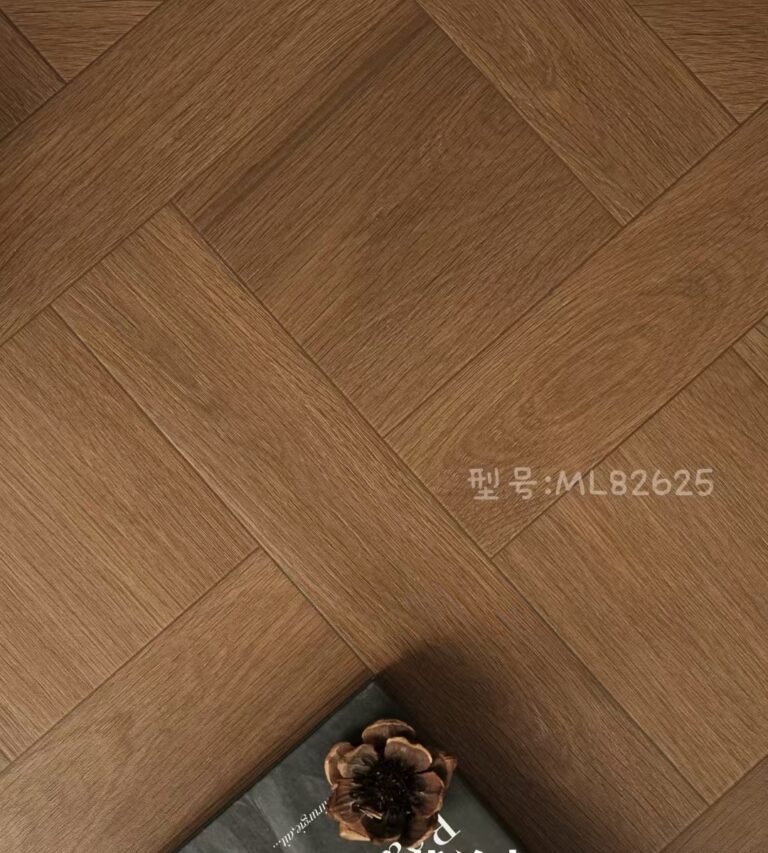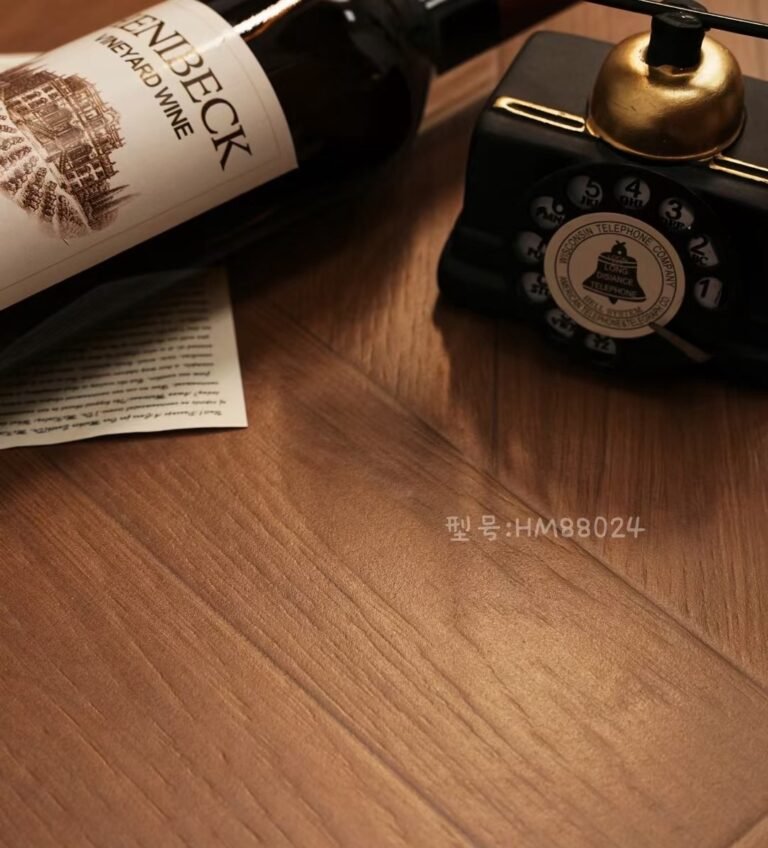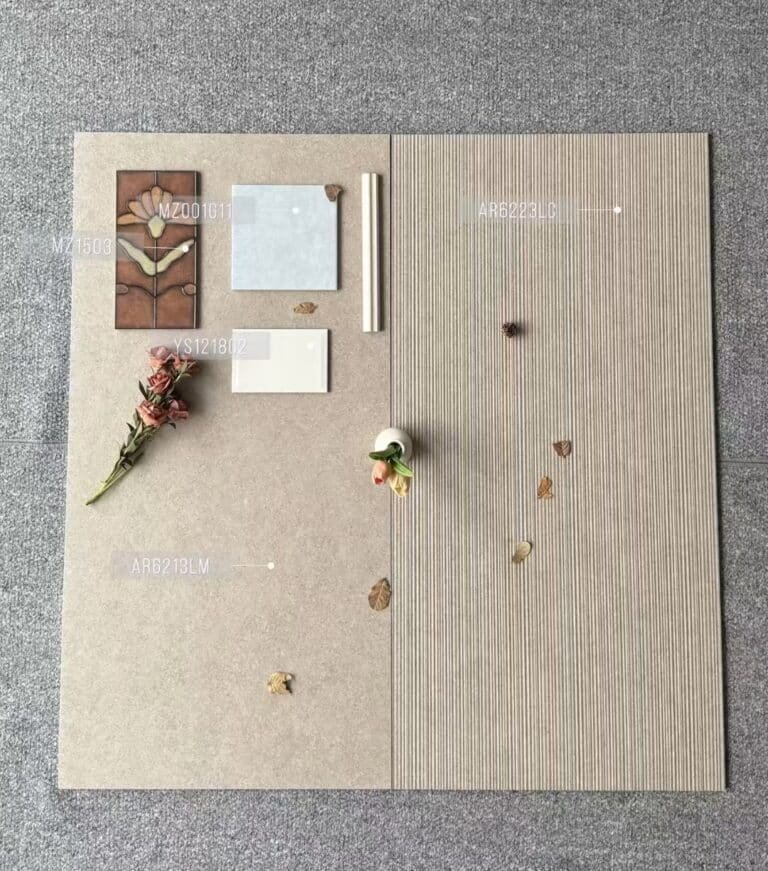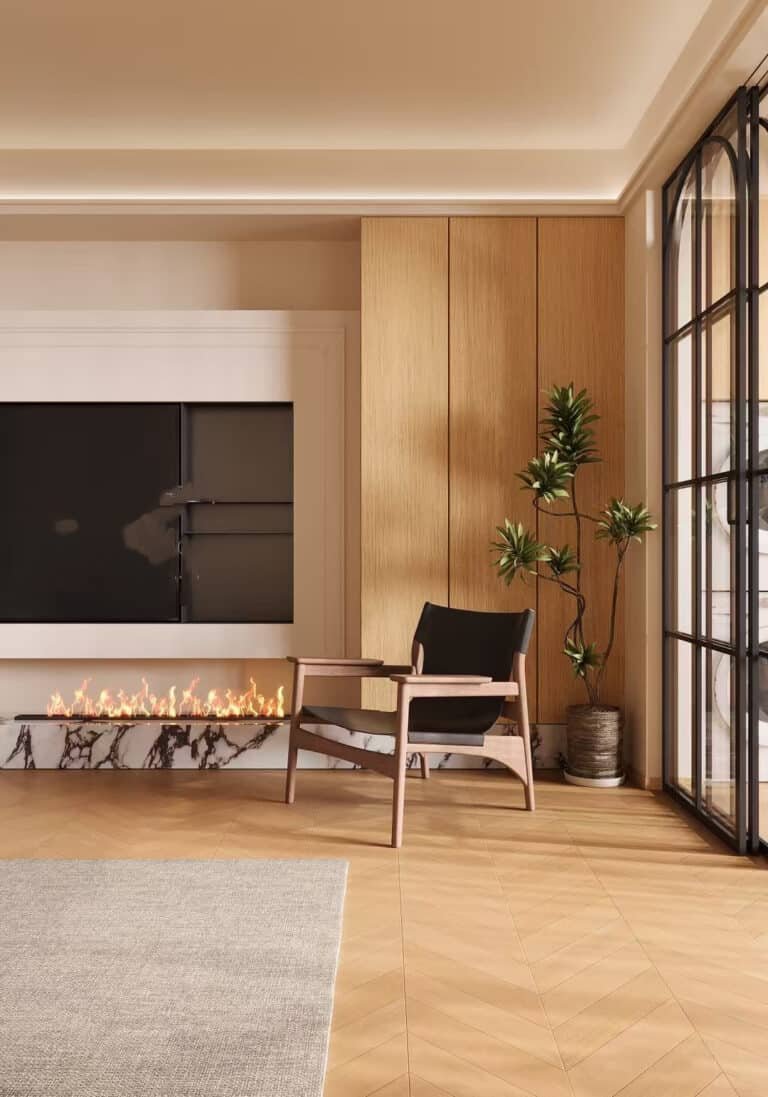
Stop thinking that customers only care about “durable,” “wear-resistant,” or “affordable.” The new generation of consumers is far more interested in the overall atmosphere of a space and their longing for a better life. From Nordic minimalism to Italian luxury, from industrial chic to modern Chinese style, what they truly seek is a reflection of taste and style. If you want your tiles to immediately catch a customer’s eye, it’s time to shift your mindset—use design thinking to redefine tiles and become a “creator of spatial ambience,” not just a “building materials seller.”
In the fiercely competitive tile market, **aesthetic sense is the true core competency**. Mastering the art of **selling tiles through design thinking** can set you apart from the competition.
Certainly! Here’s a fluent English translation of your text, suitable for commercial or professional settings:
(2)-1. Core Competitiveness: A Professional and Tasteful Product Portfolio
Modern customers expect tiles to set the tone for an entire space’s style. For example, marble-effect tiles emphasize luxury and fashion, making them perfect for modern and high-end interiors by exuding an elevated sense of sophistication. Wood-grain tiles offer a warm and natural feel, making them timeless choices for Nordic or Japanese-style spaces. For minimalist or industrial settings, cement tiles create a cool and distinctive character. Combined with thoughtful color strategies—like light gray or off-white to brighten small spaces and deep gray or dark green to add steadiness to larger rooms, or using Morandi and retro tones to break monotony—these options cater to the refined tastes of the younger generation.
Furthermore, size specifications and installation methods are also a test of design expertise. Large-format tiles (such as 900×1800mm) have fewer seams and instantly improve both the overall look and modern feel, making them ideal for high-end flooring. Small decorative tiles are great for kitchens and bathrooms, serving as visual highlights or for dynamic mixing to add layers of interest.
(2)-2. Commercial Moat: Building Deep Brand Value
Relying solely on wide distribution and price competition cannot create lasting market barriers. Market leaders are those bold enough to build unique brands—this includes precise brand positioning (such as “premium custom” or “fast-fashion trends”), developing signature product lines (like gold-veined marble tiles, designer-patterned tiles, thick tiles, etc.), unified brand packaging, compelling brand storytelling, and even cross-over collaborations with soft furnishing brands or co-creation with designers. These efforts enrich the brand’s DNA and help customers recognize both product functionality and brand spirit. Such strategies enhance pricing power, increase customer loyalty, and are key to breaking out of the homogenous “red ocean” market.
(2)-3. Product Marketing: Upgrading from Products → Scenarios → Lifestyle
Tile sales have evolved into new “lifestyle proposals.” On one hand, brands use model rooms, online lookbooks, 3D digital configurators, and immersive showrooms to present tiles within real home environments, allowing customers to “see what they’ll get.” On the other, pairing guides, user stories, and influencer content help consumers bridge the gap between beautiful design and their ideal life—greatly improving conversion rates and satisfaction.
For example, seasonal campaigns or themed showrooms showcase different textures and trendy colors for a unique home experience in every season; digital tools empower customers to preview matching schemes anytime; immersive sample rooms provide hands-on experiences with lifestyle atmospheres, enhancing both brand image and purchase confidence.

exture Defines the Character of a Space
Color: Setting the Mood of the Space
How Do Texture and Color Create an Elevated Space? How do you define the taste and style of a space when choosing tiles?
Texture and color are key to a space’s personality. Different textures impart distinct atmospheres, while color directly influences mood and sensation. For example, stone-effect textures enhance luxury, wood-grain tiles add natural warmth—these choices subtly but effectively elevate the overall level of taste and aesthetic in a space.
Specifications: Small Details, Big Impact, Clever Use of Space
– Large-format tiles (over 900×180mm) minimize seams and create a more expansive, sophisticated effect—especially suitable for living rooms
– Small decorative tiles (200×200mm) enrich kitchens and bathrooms, creating eye-catching highlights
– Combining multiple sizes adds greater visual layers and complexity
Installation methods influence overall aesthetics
– Staggered (brick-bond), herringbone, and mixed patterns—each method offers a unique visual experience ;
– Personalized installation plans mean that both new middle-class homeowners and fashion-forward customers can express themselves through customization .
How do size and installation elevate the client experience?
Attention to detail makes all the difference, especially in tile sales.
Large-format tiles reduce seams and enhance unity, while smaller tiles add playfulness and dimension. Personalized installation options showcase the infinite potential of your space. Every installation is an opportunity to redefine what your client expects.
| Texture/Material Series | Craft/Technique Details | Available Colors | Size (mm) | Special Size/Thickness | Description & Design Suggestions |
|---|---|---|---|---|---|
| Stone Texture – Full Polished Glazed Tile | Regular full polished glaze, Gold full polished glazed tile | Light grey, dark grey, off-white, dark green, Morandi/retro tones… | 300×600, 400×800, 600×600, 800×800, Large sizes: 600×1200, 1000×1000, 1200×1200, 750×1500, 900×1800… | 470×1200 stair tread (12/15/18/20mm, recommended: 15mm) | Gold full polished glaze paired with dark colors and large sizes creates spatial layering; 470×1200 stair tread provides excellent solution for integrated style. |
| Stone Texture – Rustic Tile | Carved glaze, sugar glaze, dry grain, soft matte, brushed glaze | Light grey, dark grey, off-white, Morandi, retro… | 300×600, 400×800, 600×600, 800×800, Large sizes: 600×1200, 1000×1000, 1200×1200, 750×1500, 900×1800… | – | Rich techniques, retro tones fit various combinations and styles; customizable; matching outdoor thick tiles for different scenarios. |
| Cement Texture (Microcement) – Rustic Tile | Rustic (dry grain, soft matte, solid colors, etc.) | Solid gray, light gray, dark gray, Morandi gray… | 300×600, 400×800, 600×600, 800×800, Large sizes: 600×1200, 1000×1000, 1200×1200, 750×1500, 900×1800… | – | Minimalist and industrial style; simple and grand; suitable for office and open spaces. |
| Wood Texture – Rustic Tile | Inkjet, carved, dry grain | Natural wood, light gray, Morandi gray, dark gray, etc. | 150×900, 200×1000, 200×1200, 600×1200, 300×1200; outdoor boardwalk | 470×1200, 300×1200 stair tread | Consistent look for walls, floors, stairs; unified color and style meet full-space design needs in residential & high-end commercial projects. |
| Patterned Tile – Rustic Tile | Gilded rustic, standard inkjet, carved, dry grain | Colorful, retro colors… | 200×200, 300×300 | – | Small size for local highlights, kitchen/bath, personalized decor; multiple techniques, strong style. |
| Carpet Tile Series – Rustic Tile | Carpet mold, self-cleaning glaze | Carpet patterns, solid gray… | 720x900x10, 750x1350x10, 750x750x9.5 | – | 3D carpet texture + self-cleaning glaze, easy to clean, high-end feel, for premium residential/commercial flooring. |
Why do IKEA’s meatballs tell a better story than your tiles?
When you walk into IKEA, you’re not just buying furniture—you’re buying an entire Scandinavian lifestyle, from the 39-yuan Lack side table to the 15-yuan Swedish meatballs. By contrast, most tile showrooms in the building materials market still communicate with customers through technical specs and price tags. While other industries have already upgraded from “product → scenario → lifestyle,” it’s time for the building materials industry to break out of these limitations!
Create magazine-worthy display spaces
Five-Senses Experience Design
Learning Bestseller Creation from Fast Fashion: ZARA-style New Tile Launch Strategy
(1) Quarterly Themed Collections
(2) Limited Edition Marketing
(3) Visual Merchandising Revolution
Learning Content Marketing from the Beauty Industry: L’Oréal-Style Emotional Connection
(1) Product Personification
(2) KOC (Key Opinion Consumer) Incubation Program
(3) Emotional Value Packaging
Learning Service Design from the Hotel Industry: Ritz-Carlton-level Attention to Detail
(1) Innovative Service Touchpoints
(2) Dramatic Service Processes
(3) Invisible Service Design
(1) Why Build Your Own Brand?
(2) How to Build a Tile Brand?
When tile sales meet the blockbuster mindset of fast fashion, the immersive scene creation of coffee shops, the five-senses experience design of the automotive industry, the emotional marketing of beauty brands, and the theatrical service of the hotel industry, traditional building materials sales are completely reinvented. What customers truly seek is no longer just a 60×60 cm tile, but the beautiful vision of an ideal lifestyle that can be achieved through it. By breaking down industry boundaries with a cross-disciplinary mindset, your tile store can transform from a simple material supplier into a trend-setting lifestyle curator.
In the new era of tile sales, it’s not about price or just technical specs like wear resistance—it’s about stories, scenes, and a whole sophisticated way of living. With a unique brand positioning, differentiated product design, distinctive visual identity, and digital marketing strategies, let customers “see” their dream home. Move them with your taste and attention to detail, so they choose to trust and follow you. You’re not just selling tiles—you’re advocating a lifestyle.
So, don’t get trapped in the price war. Let your tile store embrace the power of design and branding, crafting your own style and narrative, and become a curator of aesthetics and long-term value. Only then can you truly achieve the leap from “selling tiles” to “selling a way of life.”






China Ceramic And Porcelain Tile Manufacturer
Subscribe to receive exclusive content, guides and updates directly to your inbox.
We respect your privacy. Unsubscribe at any time.
2024 Intereal. All rights reserved.
Please fill out the form below and we'll get back to you shortly.
By submitting this form, you agree to our privacy policy.